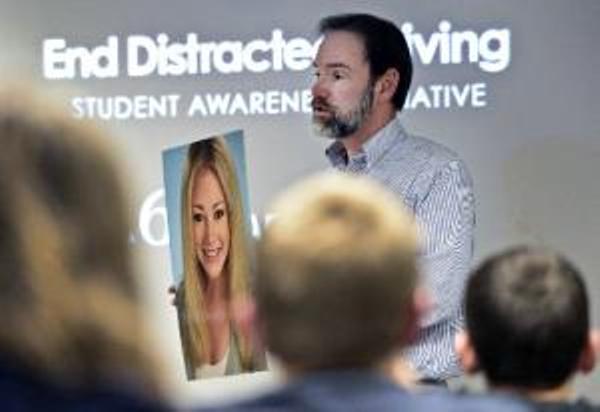 Shortly after my daughter Casey’s death I was asked to participate in distracted driving presentations. I did so and told Casey’s story and held a photo of Casey for everyone to see. People were moved, perhaps because of how young and vital Casey was, with her entire life ahead of her. But I had no idea whether telling Casey’s story was actually changing people’s attitudes and behaviors about distracted driving.
Shortly after my daughter Casey’s death I was asked to participate in distracted driving presentations. I did so and told Casey’s story and held a photo of Casey for everyone to see. People were moved, perhaps because of how young and vital Casey was, with her entire life ahead of her. But I had no idea whether telling Casey’s story was actually changing people’s attitudes and behaviors about distracted driving.
 That prompted my search for an evidence-based distracted driving presentation. While I did not find such a presentation, I did discover that Children’s Hospital of Philadelphia was a leader in teen injury prevention program. I then started working with Lela Jacobsohn, PhD and Flaura Winston, M.D, PhD from CHOP’s Center for Injury Research and Prevention(CIRP). A science-based distracted driving presentation was developed that integrated health communication, behavioral science and behavior change theory and teen – targeted persuasion principles. Pre and post presentation surveys were designed so we could scientifically measure and evaluate how effective our presentation was and how we needed to change that presentation to increase its effectiveness. The results of analysis of surveys completed in connection with our pilot program in 2012 have been released in a CHOP Research Institute White Paper dated April 9, 2014, “Evaluation of EndDD.org’s Student Awareness Initiative: Effectiveness of a Program to Prevent Teen Distracted Driving.”
That prompted my search for an evidence-based distracted driving presentation. While I did not find such a presentation, I did discover that Children’s Hospital of Philadelphia was a leader in teen injury prevention program. I then started working with Lela Jacobsohn, PhD and Flaura Winston, M.D, PhD from CHOP’s Center for Injury Research and Prevention(CIRP). A science-based distracted driving presentation was developed that integrated health communication, behavioral science and behavior change theory and teen – targeted persuasion principles. Pre and post presentation surveys were designed so we could scientifically measure and evaluate how effective our presentation was and how we needed to change that presentation to increase its effectiveness. The results of analysis of surveys completed in connection with our pilot program in 2012 have been released in a CHOP Research Institute White Paper dated April 9, 2014, “Evaluation of EndDD.org’s Student Awareness Initiative: Effectiveness of a Program to Prevent Teen Distracted Driving.”
Statistically significant changes were made from pre to post presentation with respect to teen-parent communication about distracted driving, including increasing teens’ intention to speak with parents about stopping parent cell phone use – texting and talking – while driving; an increase in teens’ belief in the importance of having those conversations with parents; and an increased frequency of having actual conversations with parents about stopping cell phone use while driving. There was also a significant reduction in parents’ texting while driving as observed by their teens. Statistically significant changes with respect to teen to teen communications and reports of teens’ use of cell phones while driving were not significantly reduced.
Recommendations for increasing the effectiveness of the EndDD.org presentation have been incorporated into the 2013-14 presentation and a revised presentation incorporating more changes will be released in the summer of 2014. Some of the recommendations that will be incorporated into updated EndDD.org presentations include encouraging group reflection on the “pros and cons” of driving distracted, more emphasis on building a plan with peers that includes concrete steps to reduce driving distractions and incorporating aspects of bystander intervention strategies to teach skills necessary to successfully intervene and build confidence that those interventions would be successful.
I am grateful for the assistance of CHOP and look forward to future analysis of our presentations as we work together to develop the most effective distracted driving presentation possible. To learn more about CHOP and its resources to keep teen drivers safe go to http://injury.research.chop.edu/traffic-injury-prevention/teen-driver-safety.






